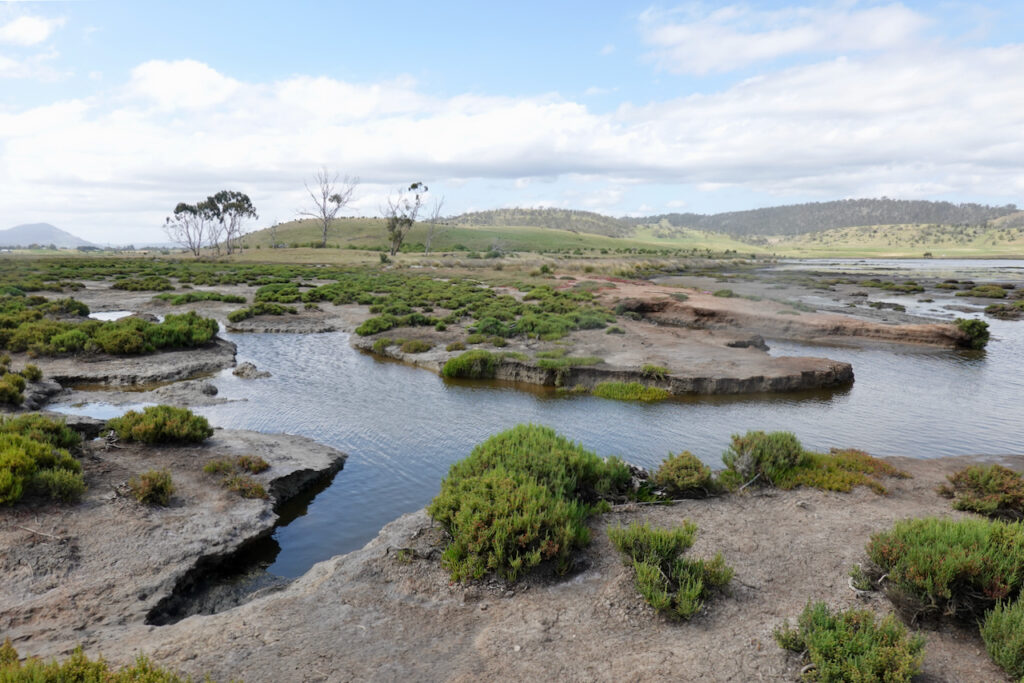Where the Coal River meets Pitt Water-Orielton Lagoon, one of Australia’s biggest wetland reclamation projects is underway. The Eddington family, who own the 1,000-hectare Richmond Park Estate site, are the driving force behind this effort to restore this internationally significant wetland – part of an Australian Government funded restoration project supported by NRM South.
Driving across the Richmond Park Estate property along a bumpy track, the rolling hills, grazing sheep, newly installed vineyard and regular passing aircraft from nearby Hobart airport give no sign that a 265-hectare lagoon complex lies just beyond the rise.
Will Eddington would one day like to see this wetland become a feature of his vision for the property. ‘Richmond Park is primarily a sheep grazing property’, explains Will. ‘But we have a unique microclimate here in the Coal Valley so we’re interested in transitioning to primarily viticulture and opening a cellar door eventually. I’d like visitors to be able to view the wetland in its restored state and learn a bit more about the saltmarsh during their visit.’
The Eddingtons are part of a growing movement of farmers in Australia who are working to improve the environmental values of their properties and repair some of the damage of decades past. Richmond Park, which has been farmed since 1823, has been predominantly used for sheep grazing. In the mid-1900s, a levee bank was installed in an effort to reclaim additional grazing land and prevent saltwater incursion onto the property. As a consequence, water now follows a diverted course which has led to erosion and also impedes the movement of juvenile fish that use the wetland as nursery.
Will Eddington, in explaining his motivation for removing this levee, highlighted his desire to restore the property’s environmental values; ‘I’m the second generation to farm this property, after my family purchased it in 1986. I feel that we need to give a bit back to the environment and by removing the levee we’ll see the restoration of natural flows which will bring new life to the site. Restoring the wetland’s tidal mudflats will bring enormous benefits to local wildlife – particularly the fish species that use this saltmarsh as a nursery. I love the birdlife here and I’m excited that we have an opportunity to contribute to fish breeding stocks.’
The project, which will run until June 2023, highlights the value of natural resource management organisations working together with landholders and supporting partners to bring significant benefits to important landscape areas, and how these activities can be incorporated into a broader business plan.
This project is supported by NRM South through funding from the Australian Government.
